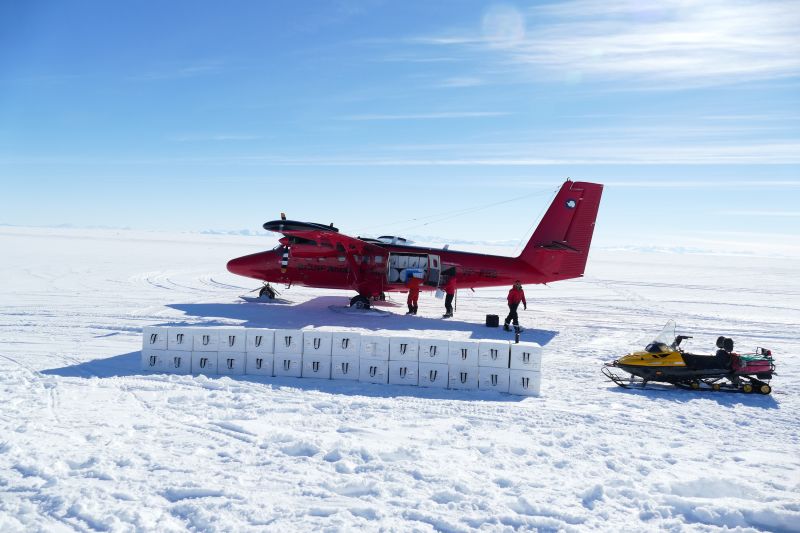
Unveiling the Startling Secrets of Antarctica's Ice Melting History

Discover the intriguing revelations from a 2,000-foot-long ice core shedding light on Antarctica's rapid ice sheet melting and its implications for sea level rise.
The Astonishing Ice Core Discovery
In a groundbreaking study recently published in Nature Geoscience, researchers unearthed compelling evidence of a dramatic event in Antarctica's history: the sudden shrinkage of the West Antarctic Ice Sheet approximately 8,000 years ago. This revelation, extracted from a 2,000-foot-long ice core, unveils a troubling reality about the potential speed at which Antarctic ice could melt, sending sea levels soaring.
Map showing the location of the Skytrain Ice Rise, part of the Ronne Ice Shelf, from where the ice core was taken.
The study discloses that a significant portion of the ice sheet underwent a staggering thinning of 450 meters, equivalent to the height of the iconic Empire State Building, over a mere 200-year period at the conclusion of the last Ice Age. This unprecedented insight marks the first direct proof of such a rapid ice loss event across Antarctica, raising critical concerns about the future stability of the region's ice masses.
Implications for Global Sea Level Rise
The ramifications of the accelerated ice sheet retreat observed in the ice core data are profound, particularly in the context of global sea level rise. The West Antarctic Ice Sheet, housing a substantial volume of water capable of elevating sea levels by over 16 feet, poses a significant threat to coastal regions worldwide if further melting occurs at a rapid pace.
Experts emphasize the urgent need for climate action to avert a potential catastrophic scenario of widespread flooding in coastal cities. The study's findings serve as a stark reminder of the vulnerability of Antarctica's ice reserves to rapid environmental changes, highlighting the critical importance of addressing climate change to mitigate the risks of accelerated ice loss and subsequent sea level rise.
Insights from Ice Core Analysis
Ice cores, like the one extracted from the Skytrain Ice Rise on the Ronne Ice Shelf, offer invaluable insights into Earth's past climate variations. These frozen archives, composed of layers of compacted ice containing ancient air bubbles and environmental indicators, provide a window into the historical temperature fluctuations and atmospheric conditions over millennia.
Inside the drilling tent at Skytrain Ice Rise, scientists preparing the drill for its next drop into the borehole.
Through meticulous analysis of water isotopes and trapped air bubbles within the ice core, scientists can reconstruct past temperature trends and ice sheet dynamics. The rapid thinning identified in the ice core from 8,000 years ago underscores the sensitivity of the West Antarctic Ice Sheet to climatic shifts, underscoring the need for enhanced predictive models to anticipate future ice sheet behavior under a warming climate.
Insulated boxes full of ice cores being loaded into the Twin Otter aircraft, Skytrain Ice Rise, Antarctica.












